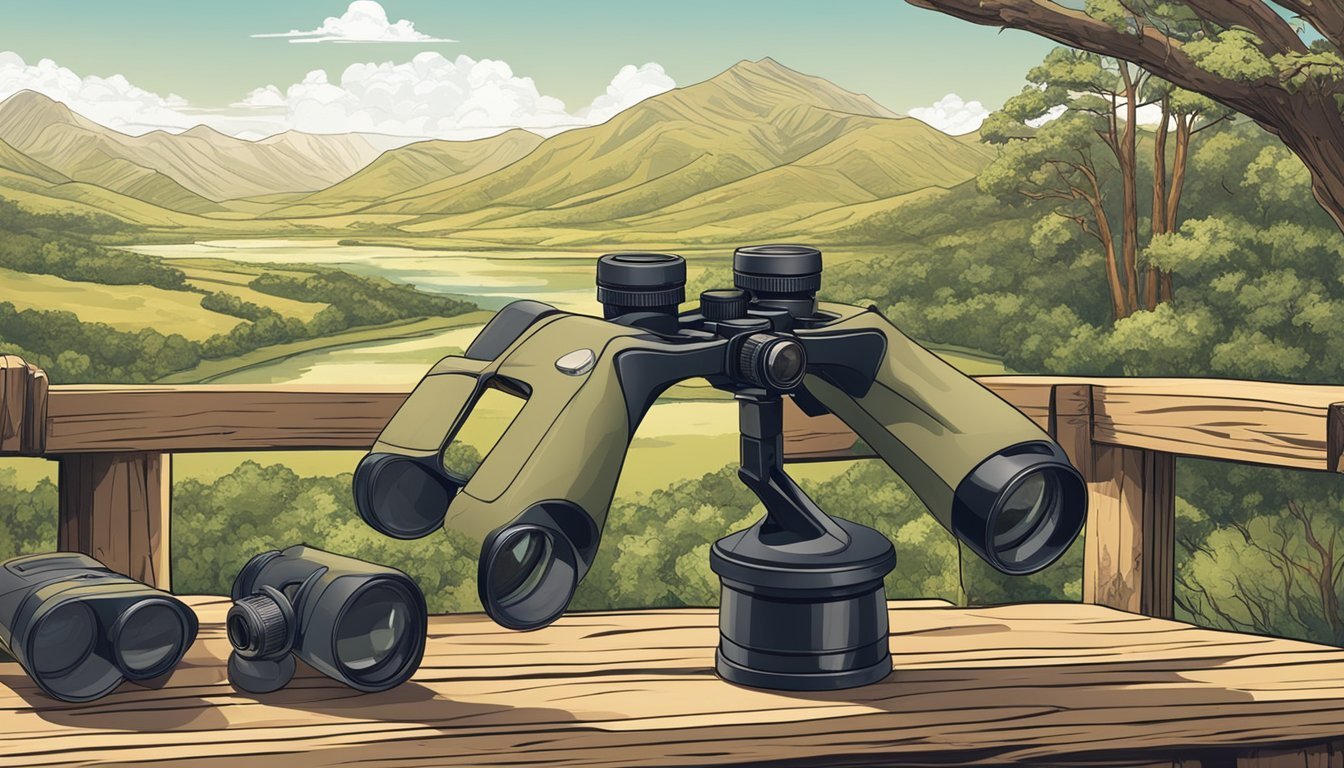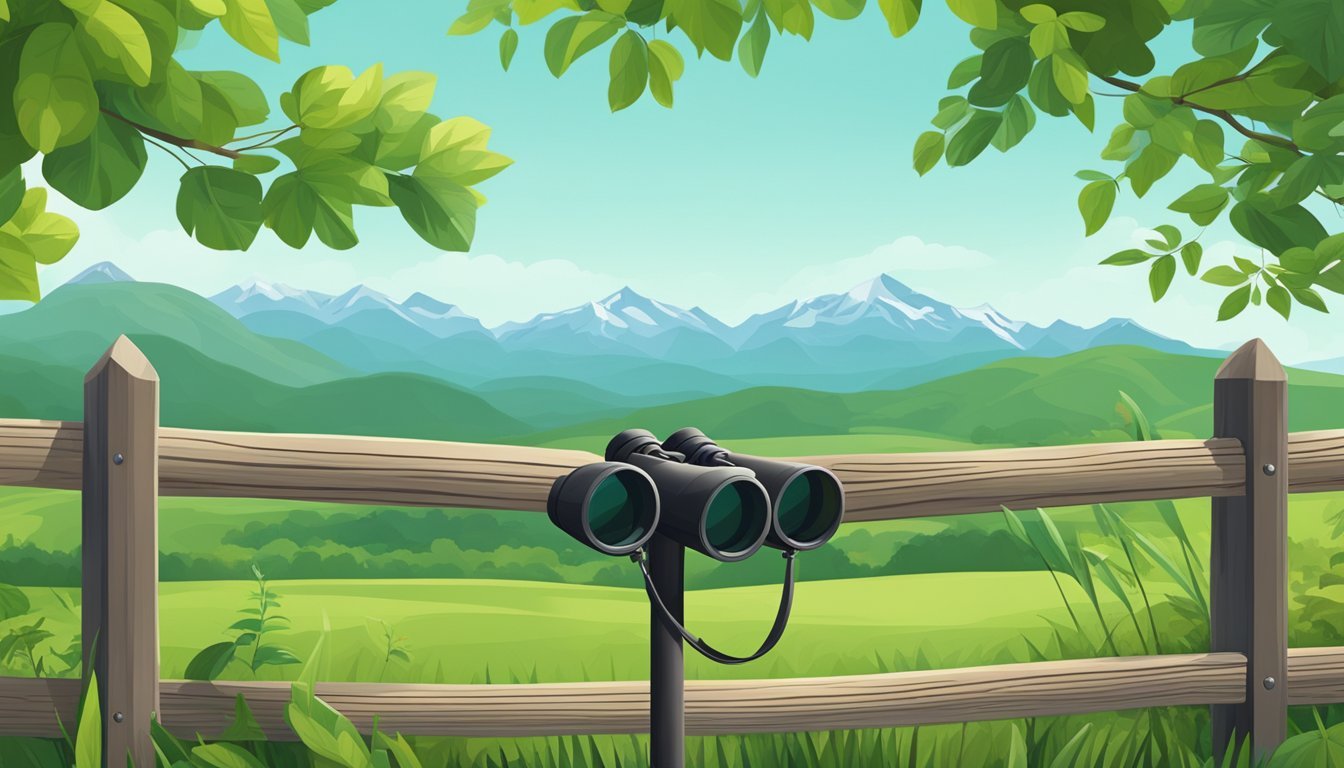The Best Binoculars for Wildlife Observation and Security Surveillance
Essential Gear for Homesteaders
Selecting the right binoculars is essential for wildlife observation and security surveillance on a homestead. Whether a user is tracking animals across vast natural landscapes or monitoring the safety of their property, clarity, durability, and ease of use become pivotal considerations. When observing wildlife, binoculars with high-quality optics are a must to appreciate the rich details of animals in their natural habitat. On the other hand, for surveillance purposes, one requires binoculars that can perform well in a range of lighting conditions and offer a wide field of view to keep an expansive area in sight.
For wildlife enthusiasts, binoculars like the Nikon Aculon A211 with a magnification of 8x and a 42mm objective lens can offer a vast field of view, critical for spotting and following wildlife. Meanwhile, binoculars with higher magnification and objective lens size, such as the Nikon 8252 ACULON A211 10-22×50 or the Vortex Razor UHD 10×50, are particularly viable for long-range surveillance tasks, where clear and detailed images are required to discern distant objects.
As the needs for wildlife observation and security surveillance can differ, it remains vital to identify binoculars that balance the features necessary for both applications. Strong build quality and comfortable design are also significant factors ensuring the binoculars withstand regular use and are easy to handle for extended periods. With various options available in the market, like the Swarovski SLC with its multi-coated HD optics or the budget-friendly Vortex Optics Crossfire, users can choose a pair that best suits their specific requirements on the homestead.
Understanding Binocular Specifications
Selecting the right binoculars involves understanding a series of technical specifications that directly impact their performance in wildlife observation and security surveillance. These specifications determine how the binoculars will operate in various conditions and how effectively they can spot and track subjects.
Magnification and Field of View
Binoculars are often described by two numbers: the magnification and the size of the objective lens. The magnification factor reveals how many times closer the subject will appear through the binoculars compared to the naked eye. For instance, a magnification of 10x means the subject appears ten times closer. However, high magnification can sometimes lead to a narrow field of view (FOV), which is the width of the area visible at 1,000 yards. Binoculars with a magnification of 8x might offer a larger FOV, advantageous for tracking fast-moving wildlife or surveilling expansive areas.
Image Quality and Optical Performance
The image quality of binoculars is dependent on their optical quality. High-quality optics, like those found in the Swarovski NL Pure series, use fully multi-coated lenses and BAK4 prisms to achieve superior optical performance. These coatings enhance light transmission and reduce reflections, leading to brighter and sharper images. Superior image quality is crucial for identifying details in wildlife and for effective surveillance, especially during critical moments.
Design and Ergonomics
The design of binoculars incorporates not just aesthetic appeal but also practical ergonomics. An ergonomic grip provides comfort during extended periods of use, which is vital in both wildlife observation and security surveillance. Lightweight and well-balanced binoculars help prevent user fatigue, and features such as a rubberized coating can improve grip and durability. Top binoculars prioritize an ergonomic build without compromising on optical integrity.
Close Focus and Low-Light Performance
In addition to wide views and sharp images, binoculars for both wildlife watching and security purposes must perform well in varied lighting conditions. Close focus is important for observing fine details in nearby subjects, such as the feathers of a bird or the facial features of a person. Low-light performance is equally critical, as dawn, dusk, and shadowed areas often present the best wildlife activity views and challenging surveillance conditions. Binoculars with larger objective lenses and superior optical engineering excel in these aspects, providing clarity in low-light environments.
Choosing the Right Binoculars for Different Activities
Selecting the ideal binoculars is crucial for enhancing your viewing experience during various outdoor activities. Each activity demands specific features in binoculars to improve the effectiveness and overall enjoyment.
Wildlife Observation
For observing wildlife, clarity and field of view are paramount. Binoculars such as the Vortex Razor HD 10x42 are often recommended for their superior optical quality and durability. A magnification of around 8x to 10x is typically sufficient for wildlife observation, providing a balance between close-up detail and a wide field of view.
Security Surveillance
Binoculars used for security surveillance require excellent low-light performance and a wide field of vision. The Leupold BX-4 Range 10x42 with rangefinding capabilities can serve well for this purpose. The Vortex Triumph HD 10x42 could also be considered for budget-conscious individuals, offering a good mix of quality and affordability.
Birdwatching
Birdwatchers often favor lightweight, compact binoculars with a wide field of view to easily track fast-moving birds. Waterproof and fog-proof features are also essential. The Nikon Monarch M5 8x42 comes highly rated due to its balance between close focus ability and comfortable handling.
Hiking and Outdoor Adventures
Durability, weight, and weather resistance are important factors for hikers. Compact binoculars such as Leica Trinovid 7x35 offer a suitable combination of portability and ruggedness for outdoor adventures, plus they are often waterproof and weather-resistant, making them ideal for various conditions encountered on the trails.
Stargazing
Stargazing requires binoculars with high magnification and larger objective lenses to gather more light. The Celestron Nature DX ED 12x50 stands out for this task, as it combines higher magnification with the ability to capture more light, enhancing the stargazing experience.
These binoculars cater to the specific needs of each activity, ensuring that users have the right tools for the best possible experience.
Binocular Brands and Series
Selecting the right pair of binoculars can be a pivotal factor in enhancing wildlife observation and security surveillance on a homestead. Various manufacturers excel in different aspects, offering models that cater to specific requirements such as clarity, ruggedness, and technological integration.
Swarovski and the NL Pure Series
Swarovski Optik stands out in the high-end market with the NL Pure series, known for unparalleled field of view and ergonomic design. Swarovski NL Pure binoculars offer superior optical performance for serious enthusiasts who demand the best clarity and detail in observation.
Zeiss Binoculars
Zeiss offers advanced optical technology and durability, making them a solid choice for homestead surveillance and wildlife spotting. Their coatings ensure brilliant, high-contrast images, and models like the Victory range represent their commitment to top-tier quality.
Nikon's Diverse Range
Nikon caters to all levels of users, from beginners to professionals. They provide a broad spectrum of binoculars, with the Monarch series being widely recognized for its balance between quality and affordability. Nikon's optics are renowned for crisp images and reliable performance in various environments.
Vortex for Versatility
Vortex binoculars are recognized for their diversity and value for money, offering options like the Razor and Viper series. These series stand out for their HD optics and ruggedness, suitable for both wildlife enthusiasts and property protection duties.
Leica's Premium Optics
With a reputation for high-quality lenses, Leica's range of binoculars, including the Geovid series, is well-suited for those who prioritize optimal image quality and user comfort. Their rangefinding capabilities can be essential for precise surveillance and detailed wildlife observation.
Bushnell's Entry-Level Models
For beginners or those with budget constraints, Bushnell provides entry-level binoculars that do not compromise on quality. Models like the H2O and Trophy series offer decent optical performance and resilience at a more approachable price point, making them accessible to a wider audience.
Key Features for Durability and Convenience
When selecting binoculars for wildlife observation and security surveillance, durability and convenience are paramount. These features ensure long-term performance and ease of use in an array of environmental conditions.
Weather Resistance and Waterproofing
Binoculars must have robust weather resistance to withstand the elements. Look for models with O-ring seals and nitrogen or argon purging to prevent internal fogging. Waterproofing is also essential, denoting that the unit can endure immersion and heavy rain without internal water intrusion.
Criteria:
O-ring seals: Yes/No
Nitrogen/Argon purged: Yes/No
Waterproof rating: IPX7 or higher
Lens Durability and Coatings
The lenses must be crafted from high-quality glass and protected with scratch-resistant coatings to preserve clarity. Anti-reflective coatings improve light transmission for a brighter image, while hydrophobic coatings repel water and oils, maintaining a clear view in wet conditions.
Lens Features:
Scratch-resistant: Yes/No
Anti-reflective: Yes/No
Hydrophobic: Yes/No
Compact and Lightweight Designs
For field use, compact binoculars offer easier handling and transportation, thus being a convenience feature important to users. Lightweight designs help users avoid fatigue during extended observation periods. A good blend of a compact form with robustness is often found in polycarbonate casings which provide resilience without adding excess weight.
Design Considerations:
Size: Compact
Weight: Lightweight
Material: Polycarbonate or similar
Maintenance and Warranty Considerations
Proper maintenance ensures the durability of binoculars, while understanding lifetime warranties can offer peace of mind regarding long-term investment in quality optics.
Cleaning and Care
Maintaining binoculars is crucial to preserve their functionality and appearance. Users should:
Wipe lenses with a soft, dry cloth to remove debris before using a lens cleaning solution.
Avoid touching lenses with fingers to prevent oils from smudging the glass.
Inspect O-rings and seals for integrity to keep binoculars waterproof and fog-proof.
Store properly in a padded case to protect against physical damage.
Regular checks for alignment are advisable to retain optimal viewing experience.
Understanding Lifetime Warranty
Many premium binocular brands offer a lifetime warranty, signaling confidence in product durability. Notable points include:
Coverage: Typically, such warranties cover defects in materials or workmanship.
Limitations: Damage due to misuse, loss, or normal wear may not be covered.
Transferability: Some warranties may not transfer between owners, so original purchase receipts are important.
Repair or Replace: Manufacturers usually reserve the right to repair or replace the item.
Note: For specific warranty details, it is advised to read the provided documentation or contact the manufacturer directly.
Alternatives to Binoculars
When seeking alternatives for observation and surveillance, there are options that can offer portability, ease of use, and different feature sets than binoculars. Two notable options are monoculars and considering an upgrade to more advanced technology.
Monoculars: Pros and Cons
Monoculars serve as a compact, lightweight alternative to binoculars, often favored for their ease of transport and one-handed use. They are apt for users who need to reduce their carry weight or who need a quick way to observe an area without the setup time that binoculars might require.
Pros:
Portability: Small size and light structure make them easy to carry.
Ease of Use: They can be operated using one hand.
Accessibility: Generally more affordable than binoculars of comparable quality.
Cons:
Limited Field of View: A smaller lens translates to a constrained viewing area.
Depth Perception Issues: Lacking binocular vision can lead to poor depth perception.
Eye Fatigue: Prolonged use can cause more strain to the eye compared to binoculars.
When to Consider Upgrading
Upgrading observation equipment is a decision driven by the need for better performance, features, or longer-lasting materials. Users may contemplate upgrading when they require:
Enhanced Image Quality: For clearer and more detailed surveillance.
Durability: For equipment that can withstand harsh environmental conditions.
Advanced Features: Such as built-in rangefinders, image stabilization or night vision capabilities.
An upgrade should be considered when the user's current equipment no longer meets their needs for functionality, comfort, or clarity. It's also necessary when advancements in technology can offer a significant advantage or benefit to their surveillance or wildlife observation activities.







